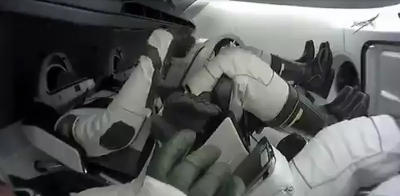London 15th August : The process of keeping astronauts breathing on the International Space Station (ISS) and other space vehicles is a difficult and expensive process.A team of international of scientists has proposed an alternative approach to create oxygen to astronauts in space by using magnetism. The study, which was published in the journal npj microgravity, proves for the first time that gas bubbles are attracted to’ and ‘dispelled from a simple neodymium magnetic in microgravity by submerging it in different kinds of water solutions.
The study could open new possibilities for engineers and scientists who are developing oxygen systems, as in addition to other space-related research that involves changes in the gas phase from liquid to.
On the ISS oxygen is created by an electrolytic cell which splits water into oxygen and hydrogen, however, you must remove those gases out of the system.
Imagine the glass of fizzy soda.
On Earth the CO2 bubbles of CO2 rapidly rise to the top however, in the absence of gravity, the bubbles don’t have a place to go.Instead, they stay floating in the liquid.
NASA currently employs centrifuges to push gas out, but the machines are massive and require a lot of power, mass and maintenance.In the meantime, the team has conducted experiments that demonstrate magnets can produce similar results in certain situations.
Although diamagnetic forces are recognized and well understood, their applications by engineers in applications in space has been not fully investigated due to the fact that gravity makes it hard to show on Earth.
In the research, the team was able to conduct tests on a specific drop tower which simulates microgravity.
They devised a method to separate gas bubbles from electrodes in microgravity conditions created by 9.2s in the Bremen Drop Tower.
“These effects have huge implications for the improvement of Phase separation systems for instance for space missions that last for a long time which suggests that the efficient use of oxygen, for instance hydrogen production in water (photo-)electrolyzer systems is possible even in the absence of buoyant force.” Dr.Katharina Brinkert, from the Department of Chemistry at the University of Warwick, UK.
“After many years of analysis and computational research, being able make use of this incredible drop tower in Germany has provided concrete proof that this concept can function in the zero-g space-environment,” explained Professor Hanspeter Schaub of University of Colorado Boulder.
rvt/
.







